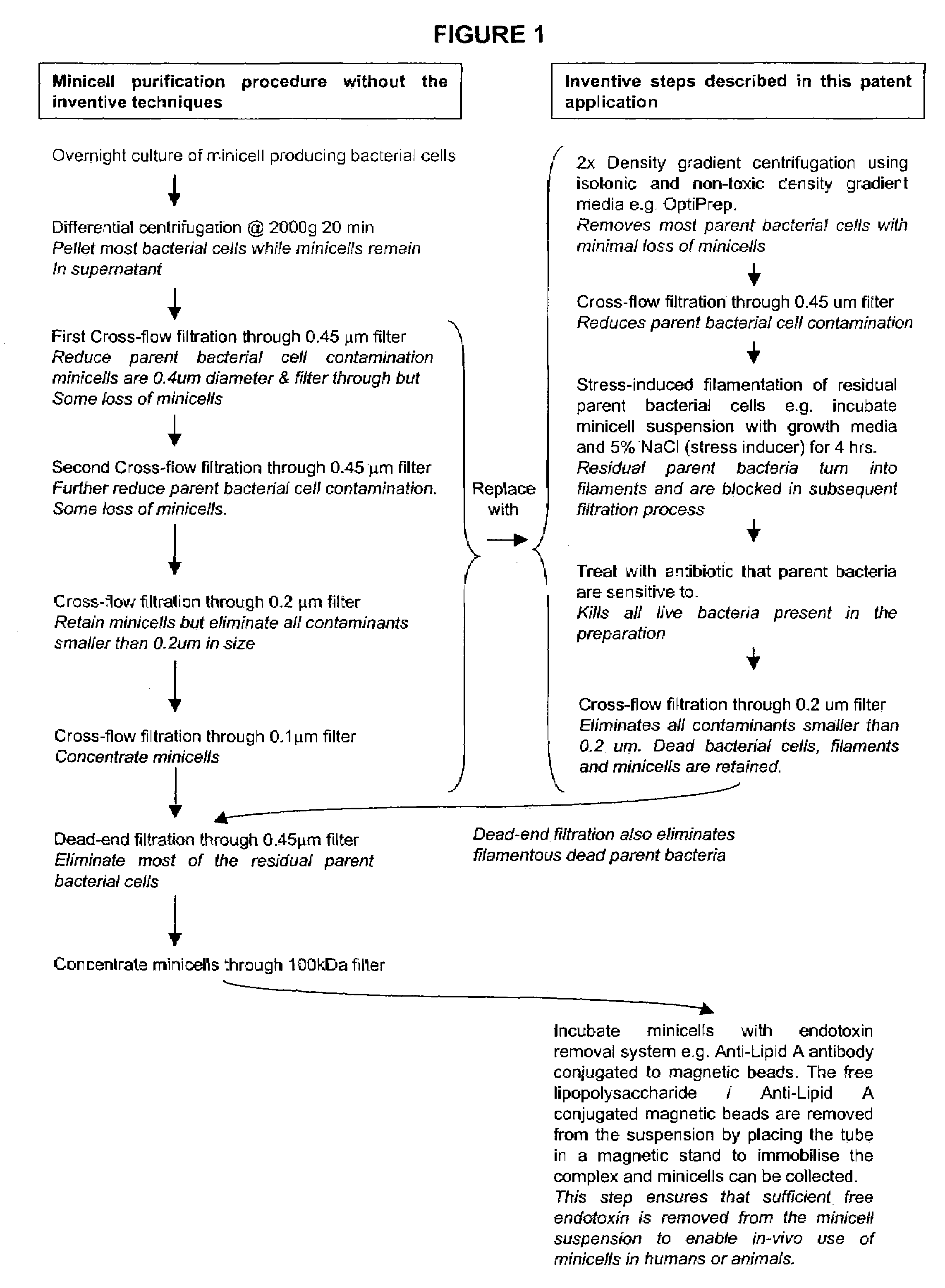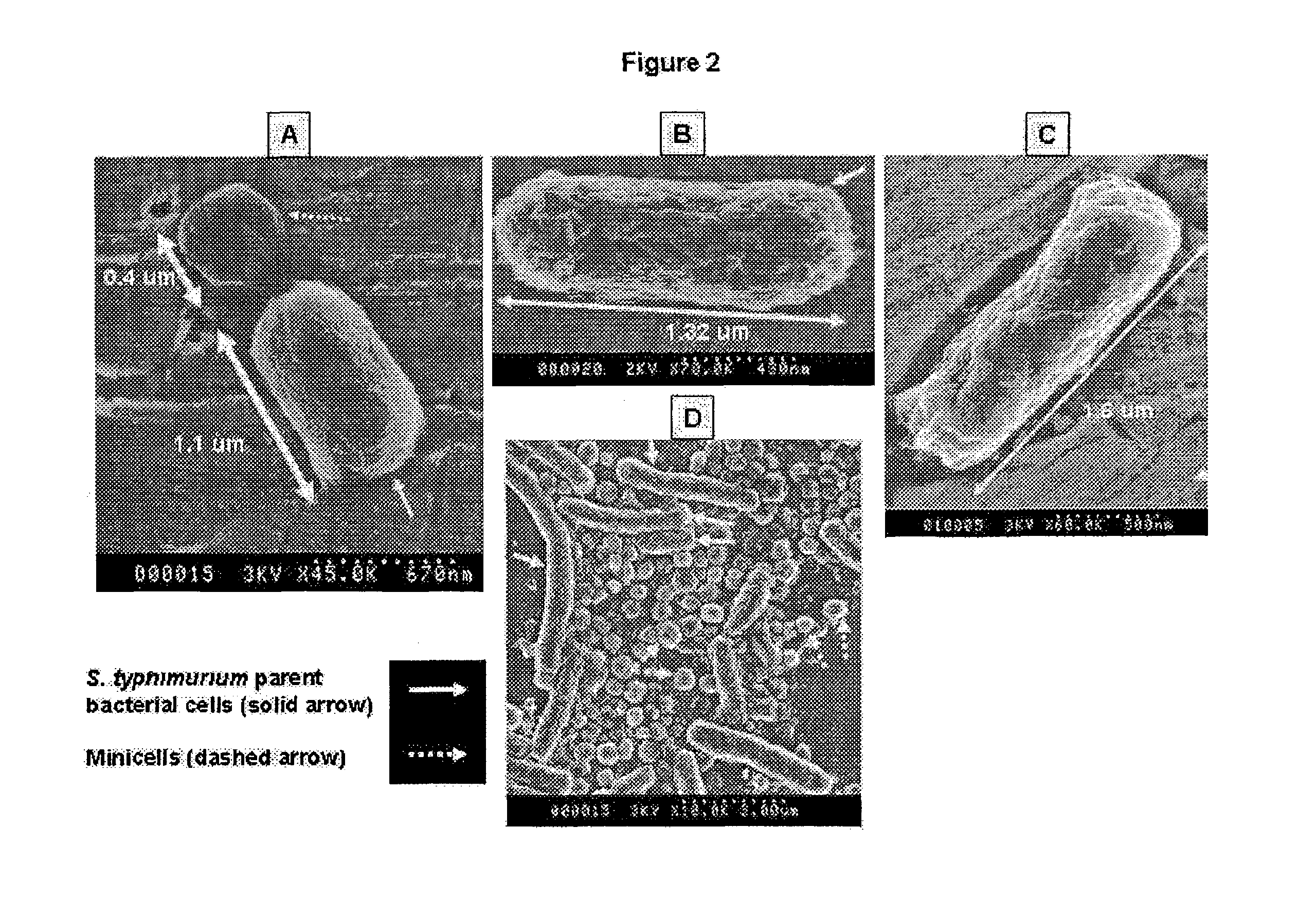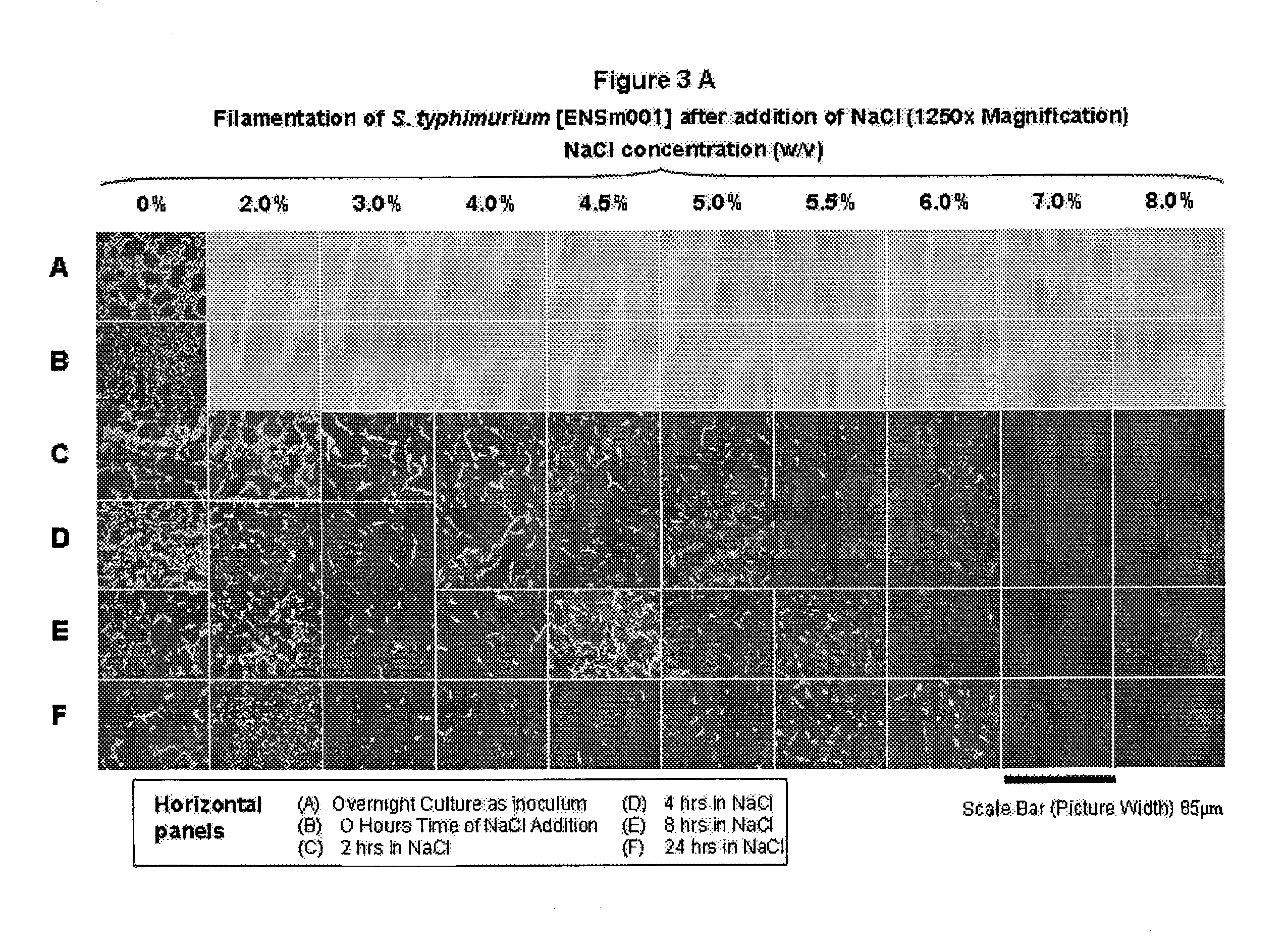Pharmaceutically compatible method for purifying intact bacterial minicells
a technology of bacterial minicells and bacterial spores, which is applied in the field of pharmaceutically compatible methods for purifying intact bacterial minicells, can solve the problems of insufficient purity achieved by conventional purification methods for all in vivo applications, death of contamination levels, and general unsatisfactory results of conventional methods of minicell purification
- Summary
- Abstract
- Description
- Claims
- Application Information
AI Technical Summary
Benefits of technology
Problems solved by technology
Method used
Image
Examples
example 1
Inconsistency of Filtration Without the Inventive Techniques
[0058]This example illustrates that the use of filtration to purify minicells, without the inventive techniques, can produce inconsistent results.
[0059]Minicell-producing mutant bacterial strains of S. typhimurium, E. coli and Shigella flexneri are analyzed by Scanning Electron Microscopy (SEM) to determine the size of the bacterial cells and minicells. For High Resolution Scanning Electron Microscopy the following method is followed. Bacterial cultures are grown in Trypticase Soy Broth (TSB) (BBL brand purchased from Bacto Labs, Liverpool, NSW, Australia). The broth is prepared according to the manufacturer's instructions at 30 μm / l, and autoclaved at 121° C. for 15 minutes. Liquid culture is grown overnight in a shaking incubator at 37° C. To change solutions the cells are centrifuged at 13,000 rpm for 20 minutes, the supernatant is discarded, and the cells are resuspended in the new reagent (described below) using a vort...
example 2
Elimination of Small Bacteria: Conversion into Bacterial Filaments
[0061]This Example demonstrates that inducing bacteria to filament prior to filtration improves minicell purification processes.
[0062]A study is designed to address the problem described in Example 1, by making the residual small-sized parent bacteria substantially larger than the 0.45 μm pore size of a dead-end filter. Stress-inducing conditions in a bacterial growth environment can prevent complete septation during bacterial cell division, resulting in bacterial filaments.
[0063]The study demonstrates that hypertonic bacterial growth media (stress-inducer) reliably induce filamentation of minicell-producing bacterial strains of S. typhimurium and E. coli. All bacteria are grown from glycerol stocks maintained at −80° C. S. typhimurium and E. coli strains are grown in Trypticase Soy Broth (TSB) (BBL brand purchased from Bacto Labs, Liverpool, NSW, Australia). It is prepared according to the manufacturer's instructions...
PUM
| Property | Measurement | Unit |
|---|---|---|
| pore size | aaaaa | aaaaa |
| diameter | aaaaa | aaaaa |
| pore size | aaaaa | aaaaa |
Abstract
Description
Claims
Application Information
 Login to View More
Login to View More - R&D
- Intellectual Property
- Life Sciences
- Materials
- Tech Scout
- Unparalleled Data Quality
- Higher Quality Content
- 60% Fewer Hallucinations
Browse by: Latest US Patents, China's latest patents, Technical Efficacy Thesaurus, Application Domain, Technology Topic, Popular Technical Reports.
© 2025 PatSnap. All rights reserved.Legal|Privacy policy|Modern Slavery Act Transparency Statement|Sitemap|About US| Contact US: help@patsnap.com



